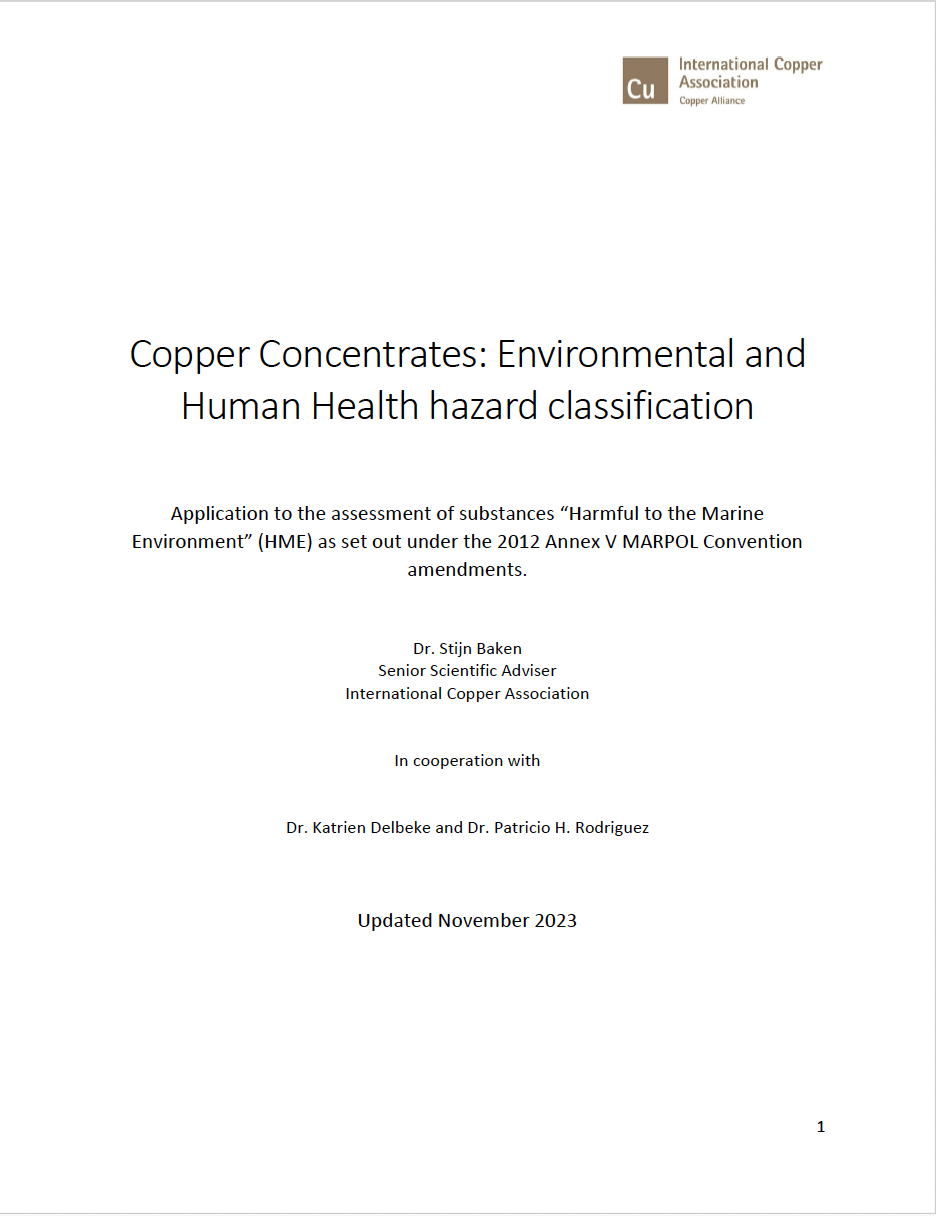United Nations Globally Harmonized System (UN GHS) and International Maritime Organization transport regulations (MARPOL Annex V and IMSBC Code)
To comply with national and international legislation, copper producers may need to classify their materials according to the criteria developed by the United Nations Globally Harmonized System (UN GHS). For example, requirements developed by the International Maritime Organization (IMO) based on the GHS criteria may affect the ability of copper producers to transport their products. The IMO oversees requirements to assess whether cargoes should be classified as Harmful to the Marine Environment (HME) or as Materials Hazardous Only in Bulk (MHB). Shippers must provide information on the cargo through the shipper’s declaration, which includes a declaration of whether the cargo is HME and/or MHB.
Copper concentrates are complex materials. Their assessment against classification criteria is not straightforward because the composition, mineralogy and properties of copper concentrates vary widely. ICA has developed industry guidance documents that help the copper sector comply with classification requirements. Additionally, ICA also developed MeClas, an independent calculation tool that helps the industry classify complex inorganic materials, including copper concentrates. The guidance documents and tools ensure copper concentrates are classified consistently and based on sound science. Following this approach, only a minority of the copper concentrates meet the criteria for HME and/or MHB classification according to the International Maritime Organization. The detailed guidance documents can be downloaded through the links on this page.

